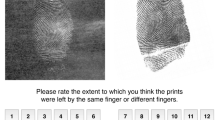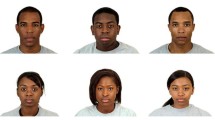Abstract
In this paper we describe a new model suitable for optimization problems with explicitly unknown optimization functions using user’s preferences. The model addresses an ability to learn not known optimization functions thus perform also a learning of user’s preferences. The model consists of neural networks using fuzzy membership functions and interactive evolutionary algorithms in the process of learning. Fuzzy membership functions of basic human values and their priorities were prepared by utilizing Schwartz’s model of basic human values (achievement, benevolence, conformity, hedonism, power, security, self-direction, stimulation, tradition and universalism). The quality of the model was tested on “the most attractive font face problem” and it was evaluated using the following criteria: a speed of optimal parameters computation, a precision of achieved results, Wilcoxon signed rank test and a similarity of letter images. The results qualify the developed model as very usable in user’s preference modeling.






Similar content being viewed by others
References
Barrett DV (1997) Graphology. Predictions Library, US Games Systems, Incorporated, http://books.google.sk/books?id=K1t6AQAACAAJ
Dolinský J, Takagi H (2007) Synthesizing handwritten characters using naturalness learning. In: IEEE International Conference on Computational Cybernetics 2007. ICCC 2007. doi:10.1109/ICCCYB.2007.4402023, pp 101–106
Fischerová-Katzerová V (2009) Grafologie - 2., doplnėné vydání. Psychologie pro kaŻdého, Grada. http://books.google.com.au/books?id=lx1eyy4tOfAC
Jablonský E (2005) Príručka interpretácie grafologických znakov. Edis. http://books.google.sk/books?id=S4nTGAAACAAJ
Jakša R, Takagi H (2003) Image filter design with interactive evolutionary computation. In: Proceedings of the IEEE International Conference on Computational Cybernetics, vol 1, pp 492–497
Kuzma M (2013) Improving the estimation of font face attributes according to user preferences. In: ITAT, pp 24–28
Kuzma M, Jakša R, Sinčák P (2009) Clustering of users inputs in multi-user interactive evolutionary font design. In: 5th International Symposium on Applied Computational Intelligence and Informatics 2009, SACI ’09. doi:10.1109/SACI.2009.5136278, pp 41–46
Kvasnička V, Pospíchal J, Tiňo P (2000) Evolučné algoritmy. STU Bratislava
Mazadi Z, Ghasem-Aghaee N, Ören TI (2008) Prelude to cultural software agents: Cultural backgrounds in agent simulation. In: Proceedings of the 2008 Spring Simulation Multiconference, Society for Computer Simulation International. http://dl.acm.org/citation.cfm?id=1400549.1400566. SpringSim ’08, San Diego, pp 135–142
Mistrík J (1982) Grafológia: Synkritická analýza v modernej grafológii. Obzor. http://books.google.sk/books?id=3jiSmgEACAAJ
Mocci F, Serra A, Corrias G (2001) Psychological factors and visual fatigue in working with video display terminals. Occup Environ Med 58(4):2677271. doi:10.1136/oem.58.4.267. http://europepmc.org/abstract/MED/11245744
Pangrác L (2007) Interactive evolutionary computation for satellite image processing. Master’s thesis, Technical University of Košice, Faculty of Electrical Engineering and Informatics. Department of Cybernetics and Artificial Intelligence, Košice
Pei Y, Takagi H (2011) A survey on accelerating evolutionary computation approaches. In: Abraham A, cLiu H, Sun F, Guo C, McLoone SF, Corchado E (eds) SoCPaR. IEEE, pp 201–206. http://dblp.uni-trier.de/db/conf/socpar/socpar2011.html.PeiT11a
Schwartz SH (1992) Universals in the content and structure of values: Theory and empirical tests in 20 countries. vol. 25 in Advances in Experimental Social Psychology, Academic Press. http://books.google.sk/books?id=z9vHEy0osBAC
Schwartz SH (2007) Value orientations: Measurement, antecedents and consequences across nations. In: Measuring Attitudes Cross-nationally: Lessons from the European Social Survey. http://books.google.sk/books?id=QmBsmAEACAAJ. Sage Publications, pp 161–193
Shi P, Liu F, Yang M, Wang Z (2009) A fuzzy rules-based approach to analyzing human behavior models. In: Al-Dabass D (ed) UKSim. IEEE, pp 346–351. http://dblp.uni-trier.de/db/conf/uksim/uksim2009.html.ShiLYW09
Stritz F (2010) Grafológia pre každého: vyše 200 ukážok rukopisov, podpisy slávnych osobností, 9 podrobných grafologických rozborov. Enigma. https://sclib.svkk.sk/sck01/Record/000368878
Takada H, Fujikake K, Matsuura Y, Miyao M (2013) Multi-evaluation method of visual fatigue and motion sickness while viewing 2d/3d video clips on a liquid crystal display. In: Proceedings of the 7th International Conference on Universal Access in Human-Computer Interaction: User and Context Diversity. doi:10.1007/978-3-642-39191-0_36, vol 2. Springer, Berlin, pp 318–326
Takagi H (2001) Interactive evolutionary computation: fusion of the capabilities of ec optimization and human evaluation. Proc IEEE 89(9):1275–1296. doi:10.1109/5.949485
Takagi H, Pallez D (2009) Paired comparison-based interactive differential evolution. In: World Congress on Nature Biologically Inspired Computing 2009, NaBIC 2009. doi:10.1109/NABIC.2009.5393359, pp 475–480
Takagi H, Suzuki N, Koda T, Kojima Y (1992) Neural networks designed on approximate reasoning architecture and their applications. IEEE Trans on Neural Netw 3(5):752–760. http://dblp.uni-trier.de/db/journals/tnn/tnn3.html.TakagiSKK92
Wang S, Takagi H (2005) Evaluation of user fatigue reduction through iec rating-scale mapping. In: Aea Abraham (ed) Soft Computing as Transdisciplinary Science and Technology, Advances in Soft Computing, vol 29. Springer, Berlin, pp 672–681. doi:10.1007/3-540-32391-0_72
Ware C (2004) Information Visualization: Perception for Design. Morgan Kaufmann Publishers Inc, San Francisco
Acknowledgments
The paper is supported by the Slovak Scientific Grant Agency VEGA, Grant No. 1/0142/15.
Author information
Authors and Affiliations
Corresponding author
Rights and permissions
About this article
Cite this article
Kuzma, M., Andrejková, G. Predicting user’s preferences using neural networks and psychology models. Appl Intell 44, 526–538 (2016). https://doi.org/10.1007/s10489-015-0717-3
Published:
Issue Date:
DOI: https://doi.org/10.1007/s10489-015-0717-3




